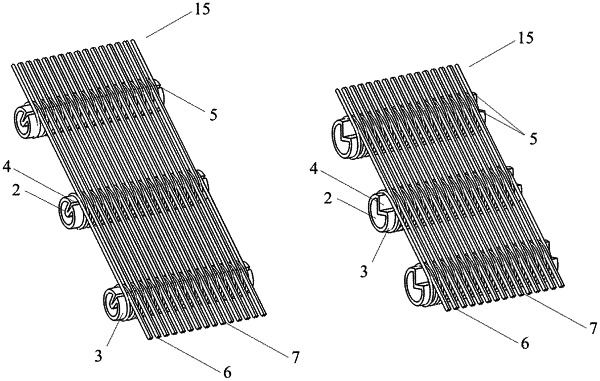| CPC F15B 15/103 (2013.01) [B25J 9/1075 (2013.01); B25J 9/142 (2013.01)] | 17 Claims |

|
1. An artificial muscle comprising:
a hollow pressurized expansion tube having a length and an outer radius and configured to change shape with pressurized expansion to transition the artificial muscle between a relaxed low-pressure state and a contracted high-pressure state,
the expansion tube comprising a generally cylindrical convex outer bearing surface extending along the length and around a first portion of the radius,
the bearing surface interrupted by a removed shape along at least a majority of the length and around a second portion of the radius,
the removed shape defining a first contact edge, a second contact edge, and a concave opening surface therebetween; and
a tension wire comprising a first end extending in a first direction, a second end extending in a second direction opposed to the first direction, and a middle portion therebetween,
the middle portion in contact with the bearing surface, the first contact edge, and the second contact edge,
the middle portion not in contact with the opening surface in the relaxed low-pressure state,
the tension wire being a first tension wire wound in a clockwise direction around the expansion tube; the muscle further comprising a second tension wire wound in a counterclockwise direction around the expansion tube;
wherein the first tension wire is adjacent the second tension wire, creating a wound set of tension wires.
|